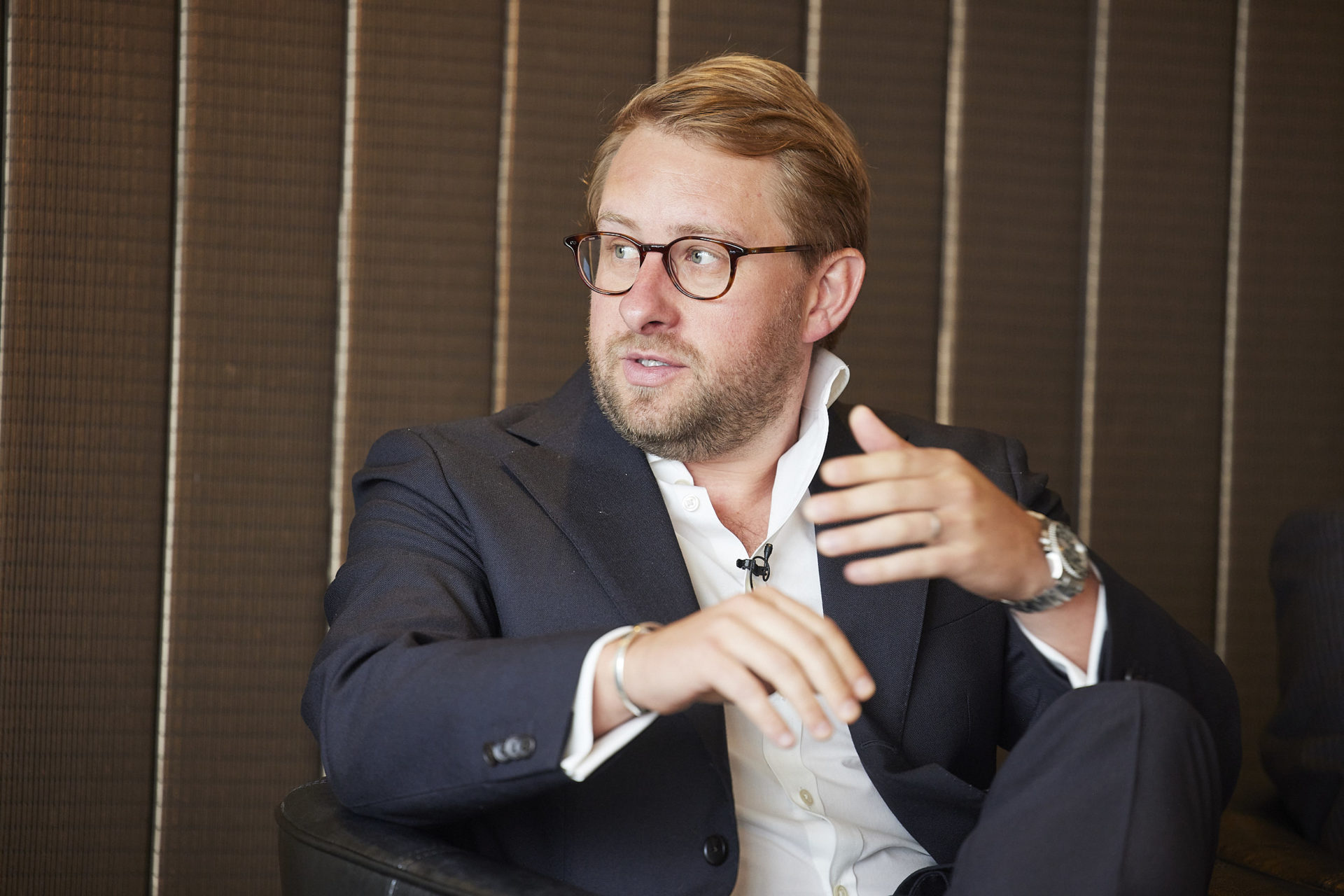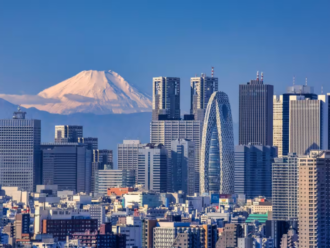Natural capital is the subject of more and more discussions among institutional investors. The importance of a vibrant ecosystem of plants, animals, water, microbes and soils cannot be underestimated as they are the lifeblood that helps keep our planet habitable.
Unfortunately, construction, overfishing and pollution mean that the air is becoming poisonous in some places while there is less freshwater to go around. If investors want to build a sustainable future, they need to help repair hundreds of years of damage to our life support system.
It is unsurprising, therefore, that the topic of natural capital, or biodiversity, opened this year’s ESG Club Conference.
Sitting on our panel was Doug Clark, head of investment research at Brightwell – the primary service provider to the BT Pension Scheme. Clark announced that natural capital is a risk that Brightwell considers when managing its portfolios.
For this it uses a framework, which is based around four pillars: portfolio construction, investment managers, stewardship and advocacy.
It then has a series of actions to manage each pillar. For example, portfolio construction involves scenario analysis and stress testing the portfolio against natural capital risks.
“Natural capital is still at an embryonic stage relative to climate change,” Clark said, pointing to data as an area that needs improving. “There is a lot of work we can do in terms of stewardship to push for improvements in that area.”
Brightwell takes biodiversity loss seriously and for good reason: without successfully tackling nature risk, no matter how big the effort, there can be no net zero as carbon and biodiversity are intrinsically linked.
Fellow panellist Alex Godfrey, investment director of Octopus Investments, said: “Just focusing on net zero and carbon often leads to you not considering the other side of the issue, which is the biodiversity crisis that is going on around us.”
Indeed, around $44trn (£34trn) of capital, or half of the world’s GDP, is at risk due to its dependence on nature, Godfrey said. “If you are a portfolio manager or a pension fund and you are not factoring in climate, biodiversity and water, it is a systemic risk to your portfolio,” he added.
Danger stocks
The natural world is not safe from any industry as they all negatively impact it to a certain degree, said ShareAction’s Alexandra Pinzon, who went on to say that energy and materials, such as plastics, are among the worst culprits, as are food and beverages.
“The production of food puts huge pressure on land,” she said. “Half of the habitable land that we have on this planet is devoted to agriculture.”
For example, agriculture drives more than 90% of tropical deforestation and less trees means fewer carbon sinks to help clear the gas from our atmosphere.
Agriculture also depletes our water supply with 70% of the water that is safe to drink is used to grow crops. Then there are fertilisers and pesticides, which pollute our air, water and soil, while overfishing is another driver of biodiversity loss.
Pinzon then fired a warning to make sure investors are not missing some of the risks. “It is critical to look at the value chain as a whole, as opposed to focusing on the direct risks associated with a specific industry,” she said.
For example, when you source raw materials as part of the manufacturing process, also consider the plastics or chemicals used by the customer when they receive the product. “If you just focus on the direct impacts, you may be neglecting a significant part of the risk for biodiversity as part of that value chain,” Pinzon added.
Leave no one behind
Unfortunately, when fighting climate change there are consequences for society. This has led to strategies to produce a “just transition” to stop communities from being abandoned if, for example, a local mine closes and there are scores of job losses. Is the same happening in biodiversity strategies?
Brightwell has three core themes: climate change, natural capital and inequality, which considers the social aspects of ESG. “We don’t view those three themes individually, but as overlapping themes,” Clark said.
“The critical thing is balancing the issues,” he added. “There are clear cut cases where there can be social benefits alongside natural capital and climate benefits, but there are often trade-offs.”
For Clark, successfully considering the social aspects of a biodiversity investment involves consistent data to “ensure we are looking at all of the factors and issues”.

How to invest
So how do you build a portfolio that protects against nature capital loss or to even restore it?
BlackRock’s Christopher Kaminker warns that it could pay to understand that some business models assume that natural resources, such as water, will be infinitely abundant and free. “That isn’t going to be the case on a forward-looking basis,” he said. “Historically that may been the case, but now they face depletion, policy change – bans on this, prices on that, subsidies for this, taxes on that – and technology change,” he added, warning that some of these risks may not be priced into corporate valuations.
Kaminker looks for the business models that could benefit from technology and policy changing the input costs of, and the availability of, natural capital.
There is, for example, a net-nature restoration law in Europe that targets 20% of land being restored by 2030. “There are companies that are going to win those contracts, and they are impactful, important companies, but most of that is government expenditure, which doesn’t have a rate of return on it. Investors can gain exposure to companies and projects that are working to restore or protect the natural world through the green bond market. BlackRock has identified $330bn (£255bn) worth of such debt.
It has also identified well over 1,000 companies that have activities that protect nature, restore nature or take the pressure off nature. These mainly have business models that are circular, such as those making the water system more efficient or agri- culture more precise. “It is about all repair, reuse, recycle and reduce – all the Rs,” he said. “These are valuable business models, and we are operating at scale in that space.”
Finally, there is the bio-economy. BlackRock has identified hundreds of companies, mostly in private markets, that are making products from nature. “There is some amazing stuff here,” Kaminker said.
One particular company BlackRock has invested in makes leather out of mushrooms. “Mycelium-based leather could be an exciting new biomaterial,” he added.
Alternative products
Pinzon added that investors should not forget that stewardship and engagement are ways to improve the biodiversity performance of a portfolio. “Companies are prioritising better agricultural practices, better water management and reducing pollution,” she said.
“That is where I see the opportunity for stewardship as a tool to drive those investment opportunities within your portfolio. Start asking the companies in those key sectors to devote more of their capex to alternative products.
“So that is potentially sitting within your portfolio and you can combine it with options around new companies that are creating, for example, protein based on plants. That is a new market that is trying to find an upside,” Pinzon said.
Tipping point
When questioned over how resilient Britain’s pension schemes are against biodiversity risk, Godfrey’s answer was bleak. “Not very well hedged at all,” he warned.
“We are still trying to figure out how biodiversity, nature and climate are overlaid in our pension portfolios,” Godfrey added. “But it doesn’t take much analysis to work out if half the world’s GDP is directly linked to nature, and you are a pension fund listed across 85 of the world’s companies, then you are probably going to be pretty exposed.
“Pension funds are inherently slow moving because they have such a big fiduciary responsibility. But we are on the tipping point, if not past it, where the cost of moving forward faster will be less than the cost of standing still.”
Complex and limited
The issue of a lack of consistent data has been raised several times, which makes the task of managing biodiversity risk harder. So how are Brightwell managing the inconsistency? “Be aware of the limitations of data,” Clark said. “It is something that will improve over time.”
He then reminded the audience about what happened with climate data, where “huge improvements” have been made over time, although he conceded that it is far from perfect and estimations are still being used in some areas.
“The issue with natural capital is that the data is even more complex,” he added. “There is no single metric, like tons of CO2. “And water use is another issue. A gallon of water in the UK is different to a gallon of water in some emerging markets.”
It is the same issue with deforestation. He cited the example of an acre of deforestation in the Amazon being different to an acre of deforestation in the UK in terms of the impact on biodiversity.
“Don’t be too beholden to the data. It will improve, but it will be a journey,” Clark said.
A whole new framework
Most frameworks that investors use in this space are principles-based or disclosure-based. BlackRock, however, has developed its own framework which is designed to search for alpha signals.
“It is true that the data space is incredibly challenged, but we found three alpha signals in the space,” Kaminker said. “They have to do with water and waste.”
Companies that are better at handling water stress are more efficient companies and outperform during times of water stress. “So we lean into those companies on behalf of clients,” he added.
It was a similar story with waste. “Companies that are more efficient at closing the loop on waste, creating value from waste are better companies and have higher return on assets.”
Leading the way
If there were any regulators in the room, Alexandra Pinzon had a message for them. Governments around the world are spend- ing $1.7trn (£1.3trn) a year on subsiding nature-negative activities, she said.
Pinzon then asked for those funds to be re-directed toward nature-positive practices instead.
Godfrey agreed. “That is a massive swing that needs to happen,” he said, before adding that the UK is quite forward thinking in this area.
“The UK government has done an amazing job of trying to push these nature markets,” he added, speaking before the election. “We have removed subsidies from nature-negative farming, and the replacement is only for nature-positive food production in the UK. That shift is starting to happen, and that is why the UK is an interesting example of what happens when the government starts to slide their policies and subsidies towards nature and climate positive actions.”
Natural capital is a complex but important issue.
It is clear that we cannot build a sustainable world without a vibrant ecosystem of animals, plants, water and microbes. It is good to hear that investors are considering and taking action on the issue instead of focusing on climate change.





Comments